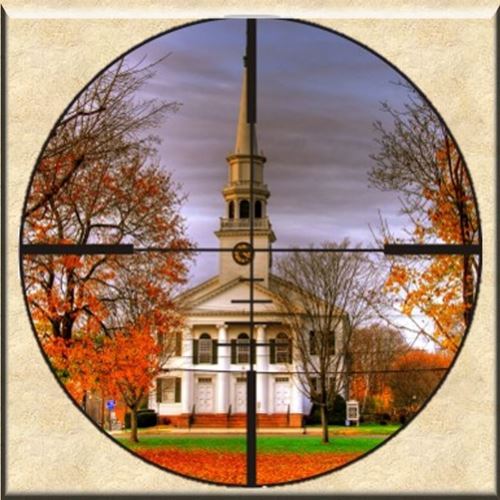
Safety and Security for Religious Facilities and Houses of Worship
Religious facilities and houses of worship are places of comfort, education, redemption and refuge for millions of people who use them to learn and practice their faith. However, they are also far too frequently seen as what are known in security parlance as, “soft targets”; facilities that are often lightly guarded, open to the public and with scheduled services for their congregants.
These characteristics, combined with the certainty of wide-spread news and social media coverage any type of attack would garner, are highly appealing to individuals who seek to create dissention, discord or division between people of different religions, or who seek to draw attention to some perceived social injustice or personal grievance. The motives for conducting a violent act at a religious facility vary greatly, ranging from religious or racial extremism, to domestic disputes. While in some cases the location is incidental, in many others the selection of a religious facility as the venue for some form of attack is quite intentional.
Balancing the desire to be welcoming and compassionate to people in need of assistance, with providing a safe and secure environment for congregants, can be extremely challenging. The values and tenants of a faith can seem contradictory to some security practices; many people of faith don’t wish to be mistrustful of someone who approaches them for help or guidance. While many religious facilities already utilize internal and external video surveillance systems, or employ part-time security personnel during scheduled worship services, it can be difficult to have to consider the use of armed personnel on-site, or to conduct random security screenings at entrances.
There’s no such thing as “100% security” in any aspect of life, but there are steps religious institutions can take to try and mitigate the impact of an incident to their congregations and/or their facilities:
Form a Team
Create and maintain working relationships with local law enforcement, emergency fire and rescue units and other businesses in your area.
- Contact religious institutions of all denominations in your area and create a workgroup; meet regularly and exchange ideas and information about safety and security.
- Share information about existing security systems with local law enforcement, and create and share building maps with local fire and rescue services.
Make a Plan
Develop emergency response plans and share them with key personnel, and emergency services in your area. Ensure clear guidance about communications, and roles and responsibilities are included in your plan.
- Develop a bomb threat response plan to assist in making informed and timely decisions. Use free Department of Homeland Resources to train staff and volunteers to use a telephonic bomb threat checklist.
- Establish emergency evacuation plans and share them with emergency services, staff, volunteers and with members of the congregation.
- Create a communications plan to reach key personnel and members of the congregation; ensure the plan includes the use of telephone, multiple social media platforms and traditional media (if necessary).
Practice, Practice, Practice
Conduct regularly scheduled training for staff and volunteers; when possible, include first responders in as many training sessions as possible.
- Train staff and volunteers to recognize suspicious behaviors, and cover procedures they should use to report them.
- Conduct regular reviews of “Run, Hide, Fight” resources for active shooter scenarios, and “Recognize, Avoid, Isolate and Notify” procedures to use when dealing with suspicious packages/devices.
- Consider providing/funding advanced emergency first aid certifications for staff and volunteers.
- Include the congregation in as many training sessions as possible.
The list below includes links to additional resources that can assist religious facilities in addressing various security concerns:
Federal Emergency Management Agency – Resources to Protect Houses of Worship:
https://www.fema.gov/faith-resources
Guide for Developing High-Quality Emergency Operations Plans for Houses of Worship:
https://www.dhs.gov/sites/default/files/publications/Developing_EOPs_for_Houses_of_Worship_FINAL.PDF
Protecting Houses of Worship Event Resource Guide:
https://www.hsdl.org/?view&did=790107
Safeguarding Houses of Worship Toolkit:
https://www.justnet.org/resources/Houses_of_Worship.html
Department of Homeland Security – Mass Gatherings: Security Awareness for Soft Targets and Crowded Places:
Safety for Faith-Based Events and Houses of Worship:
If you would like additional information, or would like to schedule a consultation with a representative from Veracity IIR, please contact us at 317-564-8383.